Back to Trees &. Natural Carbon Capture & Negative Carbon Emissions

In the recent Kenyon College alumni magazine, which parents of alums also receive, the issue was devoted to a kind of walk-through of daily life for students, faculty and others in Gambier, OH.
On a typical afternoon last fall, I learned that biology students “trekked” over to the Brown Family Environmental Center (BFEC), off-campus, where they intended to study the amount of carbon captured by trees in its 480 acre preserve.
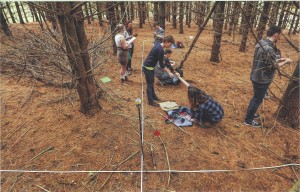 Over the fall academic semester, students returned to different forest sites in the BFEC to examine carbon stored in both trees and soil. Trees were measured and organic materials were gathered to take back to the lab for analysis.
Over the fall academic semester, students returned to different forest sites in the BFEC to examine carbon stored in both trees and soil. Trees were measured and organic materials were gathered to take back to the lab for analysis.
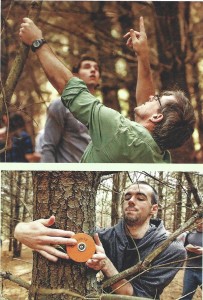 The biology students’ professor, quantitative ecologist Dr. Drew Kerkhoff, suggests that each acre of forest contains between +148 and nearly 500 tons of carbon. “Trees and other plants in that area of forest capture another eight to 12 tons of carbon each year.” Kerkhoff says this kind of ecosystem research and analysis is helping Kenyon become a carbon-neutral campus.
The biology students’ professor, quantitative ecologist Dr. Drew Kerkhoff, suggests that each acre of forest contains between +148 and nearly 500 tons of carbon. “Trees and other plants in that area of forest capture another eight to 12 tons of carbon each year.” Kerkhoff says this kind of ecosystem research and analysis is helping Kenyon become a carbon-neutral campus.
According to the college’s website, Kenyon has signed on to the Second Nature Climate Leadership Pledge Carbon Commitment. “The pledge is designed to promote and drive sustainability initiatives at institutions of higher education and focuses on carbon neutrality and resilience in the face of climate change.”
This next is cool- “Kenyon’s specific carbon commitment is to inventory the College’s contribution to greenhouse gases and to establish a plan that will lead to carbon neutrality. Both the inventory and the planning process offer many opportunities for students to meaningfully engage in the process of moving Kenyon to the vanguard of sustainable institutions.” Doesn’t say specifically how it will get there, but student engagement is a key!
Moving beyond what we humans can do to preserve and augment our carbon-devouring forests, there are some means of extracting carbon from the atmosphere by human technology.
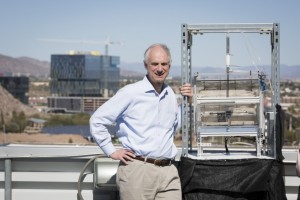 From a recent Washington Post piece comes news of a device, rooftop-mounted, that pulls CO2 out of the atmosphere. Just so you (and I) know, there are presently 4 ways to pull CO2 out of the air:
From a recent Washington Post piece comes news of a device, rooftop-mounted, that pulls CO2 out of the atmosphere. Just so you (and I) know, there are presently 4 ways to pull CO2 out of the air:
- Direct air capture
- Bioenergy combined with carbon capture and storage (I’ve written some about this here)
- Afforestation
- Enhanced weathering
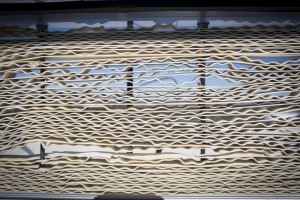
But, what the article calls Dr. Klaus Lackner’s “machine” offers the prospect of capturing CO2 in a “transparent box containing two stacks of something that resembles pasta.” The direct air capture method.
The pasta-like stuff is a sorbent material, a “hard plastic resin that has been crushed into tiny pieces and embedded in strips of softer plastic which as a synthetic analog of natural substances, such as amber, bind with CO2 so allowing the GHG to be pulled out of the atmosphere.
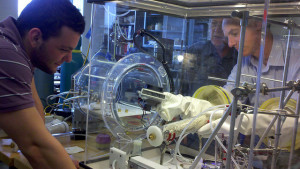 In short, this extractive method may also be referred to as “negative emissions.” But, as the article points out later, there’s no silver bullet, no clear winner among the methods.
In short, this extractive method may also be referred to as “negative emissions.” But, as the article points out later, there’s no silver bullet, no clear winner among the methods.
A number of companies are on this and similar paths. One, Carbon Engineering, is extracting a ton/day of atmospheric CO2 using a capture liquid.
Of the aforementioned ways of pulling CO2 out of the air, enhanced weathering is based on the fact that: “Rainwater containing atmospheric carbon in the form of carbonic acid falls on certain types of rock. The rock breaks down, or ‘weathers,’ and the interaction leads eventually to the formation of carbonate–such as limestone–with the carbon locked inside.” Idea is to scale up what nature does.
Here are two diagrams about extracting carbon out of the air: Direct air capture and Enhanced weathering.
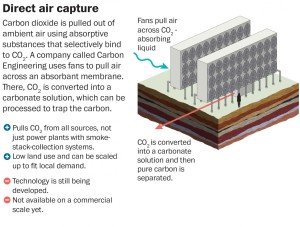
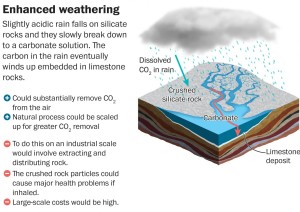
To learn more about this intriguing science and technology, see the article here.